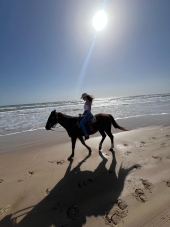
 4
4




 2
2




 6
6




Lorinne Anderson: Specializing in sick, injured, orphaned and problem wildlife for over 20 years.
 6
6




--------------------
Be Content. And work for more time, not money. Money is inconsequential.
 3
3




"In action, watch the timing."-Tao Te Ching
"Jus' Press"-Ledward Kaapana
 1
1




--------------------
Be Content. And work for more time, not money. Money is inconsequential.

 3
3




 3
3








Invasive plants are Earth's way of insisting we notice her medicines. Stephen Herrod Buhner
Everyone learns what works by learning what doesn't work. Stephen Herrod Buhner

 1
1




I would think owls would be the preferred predictor. They are more likely to hunt among the trees. They hunt mostly early morning and late evening so less apt to interact with the permies. There may be structures associated with the park where suitable nesting could be sited. Are there barn owls in your area to observe there preferred nest sites?I'm trying to sort out how to attract predators (martens, hawks, and to a lower degree owls) without creating an aggression / territory issue - last year, the park had to close some trails due to a highly territorial hawk during nesting season. Imagine picking cherries and getting attacked by a hawk - that does NOT sound like a good day.
Hans Albert Quistorff, LMT projects on permies Hans Massage Qberry Farm magnet therapy gmail hquistorff
 2
2




Lorinne Anderson wrote:Will the tree branches interconnect?
 1
1




M.K. Dorje Sr. wrote:
Probably my best strategy is to net my favorite trees that don't have much fruit on them (peaches, pluots, plums) and just let the squirrels eat from the tops of the tallest cherry trees (35') or from the apple trees. I've got TONS of apples, so I use some trees with mediocre fruit as a "trap" crop. I also harvest a lot of the netted pluots, peaches and plums now a little early, and then store the fruit in the fridge and then ripen the fruit on the counter in paper bags. The squirrels get their crop and I get mine.
I also encourage owls and hawks by putting up nesting boxes, platforms and leaving Doug-fir snags near the orchard and garden. I have a pair of Sharp-shinned Hawks and several species of owls that live around here now. I 've never heard of hawks attacking gardeners before. But I've heard of Barred Owls attacking joggers though! Hope this advice might be of help...
 3
3




Moderator, Treatment Free Beekeepers group on Facebook.
https://www.facebook.com/groups/treatmentfreebeekeepers/





 4
4





 3
3




Lorinne Anderson: Specializing in sick, injured, orphaned and problem wildlife for over 20 years.
 1
1




Lorinne Anderson wrote:Unless attracting a diurnal Owl - such as a Barred Owl - I doubt owls will do much for squirrel predation as they tend to be "out" at opposite times of the day. At least here, our resident Eastern Gray (and black) squirrels do not seem to rouse themselves until the sun is up, and tend to disappear before dark.
I would suggest creating a relationship with whoever rehabs raptors, or other natural predators of squirrels. Offering your property as a release site might be the swiftest way to up the natural control of squirrels.




Earthworks are the skeleton; the plants and animals flesh out the design.















Earthworks are the skeleton; the plants and animals flesh out the design.

| I agree. Here's the link: http://stoves2.com |




